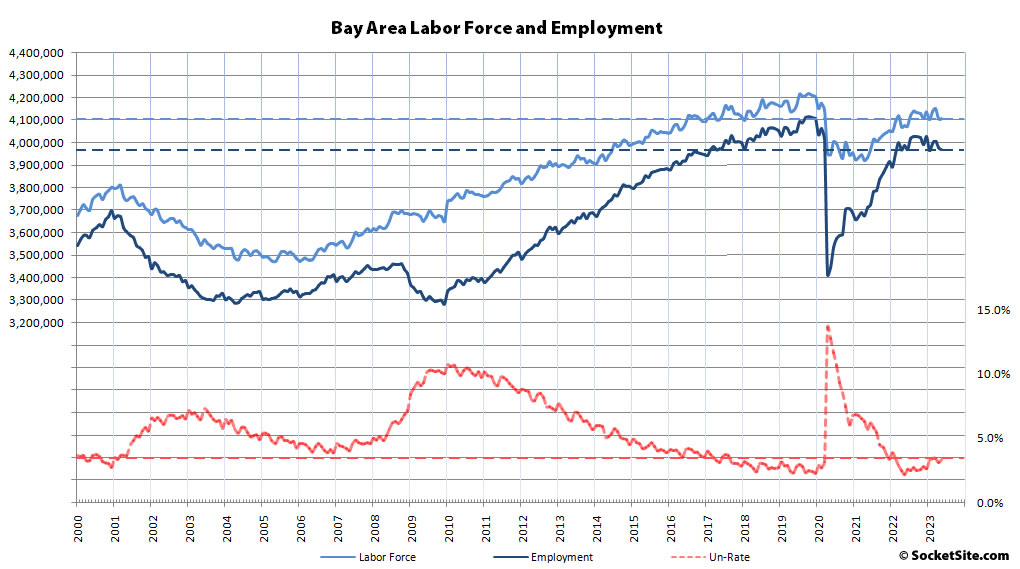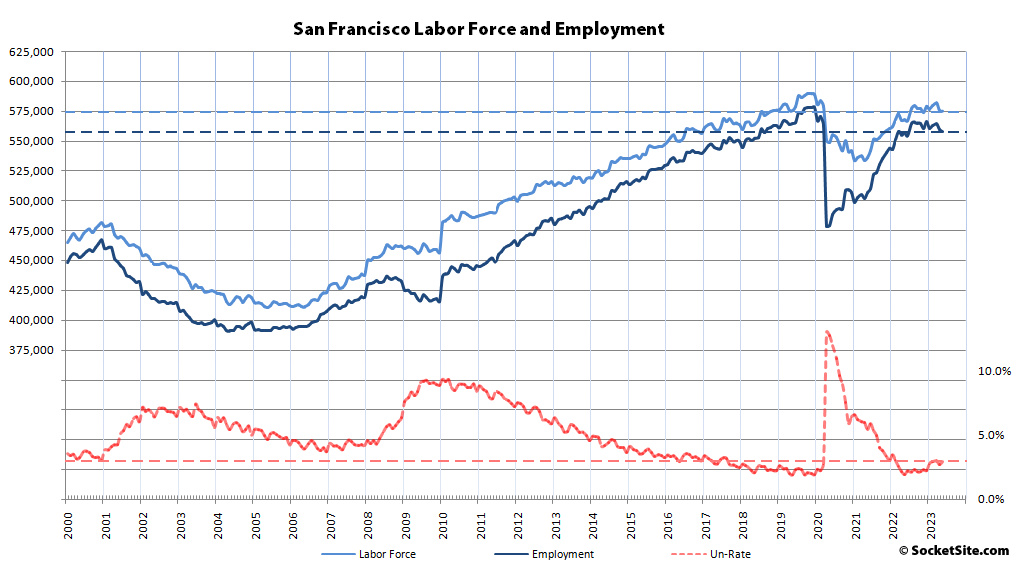Having dropped in April, the number of San Francisco residents with a job ticked down again last month, from 559,700 to 557,900. As such, while there are still 1,100 more employed people in San Francisco than there were at the same time last year, there are now over 20,000 fewer employed residents than at the end of 2019, prior to the pandemic, with over 14,000 fewer people in the local labor force (574,900) and an unemployment rate of 3.0 percent.
At the same time, while the number of employed East Bay residents inched up by 600 last month to just over 1,521,000, that’s 8,400 fewer employed East Bay residents than at the same time last year and over 52,000 fewer employed people than prior to the pandemic, with nearly 36,000 fewer people in the labor force (1,580,900) and an unemployment rate of 3.8 percent.
Having dropped in April, the number of employed residents spread across San Mateo and Santa Clara Counties ticked down by 6,000 in May to 1,452,000, representing 8,700 fewer employed residents than at the same time last year and over 40,000 fewer employed people in Silicon Valley than there were prior to the pandemic with 26,000 fewer people in the local labor force (1,497,600) for an unemployment rate of 3.0 percent.
Net employment across Marin, Napa and Sonoma counties inched down by 200 in May to 437,300, down by 1,700 versus the same time last year with 24,000 fewer employed residents than there were prior to the pandemic and over 20,000 fewer people in the combined labor force (451,800) for an unemployment rate of 3.2 percent.
As such, the net number of Bay Area residents with a job ticked down for the second month in a row, from 3,975,800 in April to 3,968,400 in May, with 17,700 fewer employed residents than at the same time last year, representing the first year-over-year decline in Bay Area employment in over two years, with 137,000 fewer employed residents than there were prior to the pandemic and nearly 100,000 fewer people in the labor force, yielding an unemployment rate of 3.3 percent.


It would appear – from casual inspection (higher numerator/lower denominator) – that the losses in the outer counties up North was higher rather than lower than in SF itself. Kind of seems to contradict the narrative that lots of people moved from the latter to the former.